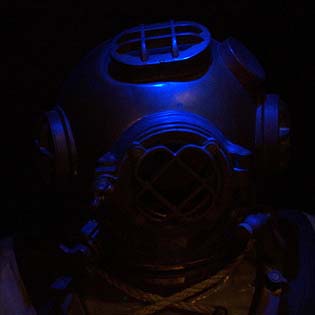Neurodiversity Deep Sea Diving
 We live in a society that believes that it is pragmatic to presuppose that consciousness is contingent upon evolutionary conditions that led to its emergence. Self awareness occurred by chance. Academics, of course, embrace the claim that consciousness is unique. But because it is not measurable and seems connected to humans only, it has been concluded in many sciences that it can be usefully ignored. The autistic provide an ability to notice.
We live in a society that believes that it is pragmatic to presuppose that consciousness is contingent upon evolutionary conditions that led to its emergence. Self awareness occurred by chance. Academics, of course, embrace the claim that consciousness is unique. But because it is not measurable and seems connected to humans only, it has been concluded in many sciences that it can be usefully ignored. The autistic provide an ability to notice.
Over the course of human self examination there have been relatively few that have differentiated between the two most obvious kinds of consciousness that exist. There is aware and self aware. There is conscious and self conscious. There is being present and there is the awareness that you are present. This is a significant distinction because it can be suggested that the first kind of consciousness, presence, is not just a feature of human consciousness but a feature of that which is alive. To be present to the fact that you are present seems peculiarly human. We can call this split consciousness. This is unique insofar as this ability for a single consciousness to experience a split evidently creates facility with being two places at once, being in two times at once, and having the power to imagine something’s opposite. To be split creates what we call imagination.
So, we use our imagination to explore this world we live in. While doing so, we often choose to ignore the ubiquitousness of that which is merely “present.” Even if split consciousness emerged randomly as a result of contingent circumstance, how is it that the ground from which that split emerged so often goes unexamined?
If feels to me that we live in a social milieu featuring three immediately accessible levels of consciousness. We are so steeped in these three conditions that we are only vaguely aware that we swim in all three waters at once. This is somewhat like Freud’s Id, Ego and Superego, but they are separate only insofar as there are words we use to describe experience. They are all the same.
There is the unconscious, also called primary consciousness. There is split consciousness, or our being two at once. There is social consciousness, featuring the wisdom of the crowd, the zeitgeist of our “times.”
Nested hierarchies are a feature of the way that structure builds as differing scales reveal structure at different levels. Atoms make up molecules that make up cells that make organs. Nested hierarchies are also how consciousness embeds. The unconscious makes up the split conscious which makes up the social conscious. There is an identity ladder that we can purchase at the consciousness hardware store. You don’t buy just one stair at a time.
My point is that consciousness can be studied. It exhibits characteristics. An unconscious behaves differently from a split consciousness, and a split consciousness behaves differently from a social consciousness.
Piaget observed the growth of children closely. Piaget, a follower of Freud and, like Freud, a believer in fourfold parallelisms, believed in close connections among species evolution, individual ontogeny and societal transformation. Piaget was particularly interested in consciousness changes as children matured. Children begin in a state of primary process or one time, one place, no opposites. There is no split consciousness. They are only present. With time, children acquire features of split consciousness, one by one, as their brains reproduce the last several hundred thousand years of our evolution, ontogeny reenacting phylogeny. All this time each individual is integrating community communications so that individual consciousness and then split consciousness are not just influenced by the larger community, but the individual is part of the larger community consciousness.
Simon Baron-Cohen bridged the work of primatologist Sue Savage-Rumbaugh to humans having difficulty walking the ontogenetic ladder. Savage-Rumbaugh hypothesized that chimpanzees exhibit an ability to intuit the motivations of other chimpanzees and humans, though there are limits. Baron-Cohen suggested that the autistic are mind blind, unable to understand that there is an other. Autism is a condition featuring anomalies in consciousness. Individuals are experiencing minds that don’t split. They are locked in primary process. They seem to be following the evolution of our ancestors to a certain point, up to the time when imagination emerged.
Ontogenetically paused, the autistic are also in species limbo, living in a society with far fewer features. An autistic person lives in the foufold parallelism in a different location from the one lived in by those with split brains. He or she climbs a narrower ladder.
Piaget studied children. Baron-Cohen studies the autistic. Let’s consider exploring autism as a condition that can make far clearer the features of consciousness as we study in detail those that wrestle in every moment with those things that the split conscious has a difficult time even noticing.
The autistic are our deep-sea divers, our journeyers into the dark. We need to rediscover how to think like the autistic think. Then maybe we can understand who and what we are.
…
Proceed to author’s FREE book download on this subject (The book is called Evolution, Autism and Social Change). 10 minute introductory video here.
Andrew Lehman on 11/16/09 in featured, The Unconscious | No Comments | Read More

